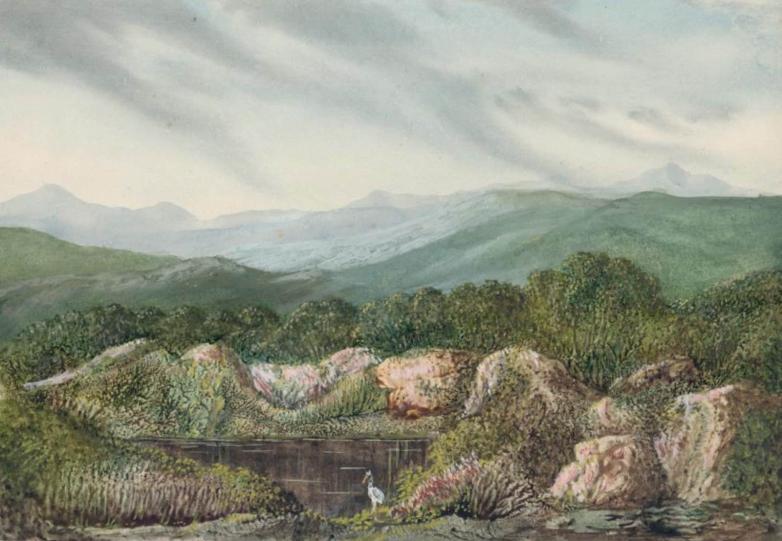First US exhibition of Watercolors by George Sand

George Sand, Mountainous Landscape with Lake, Dendrite, Watercolor and gouache on paper, 6 1/2 x 9 1/4 in.
The Jill Newhouse Gallery in New York will present the first exhibition in the United States dedicated to the watercolors of French artist and writer George Sand, November 8 – 30.
One of the very few successful female writers of the 19th century, George Sand is best known as a novelist and playwright, a true equal of her male contemporaries Balzac, Flaubert, and Victor Hugo. Sand published more than 70 novels and 30 plays in her lifetime, as well as being a regularly published journalist.
Less well known about George Sand is that she was also a brilliant and innovative visual artist who worked primarily on paper. Although her oeuvre is well known in Europe, it has never been shown in the United States. The watercolors shown in The Watercolors of George Sand (she/her/hers) 1804-1876 will confirm Sand’s reputation as a as a painter, while telling the story of the life of a female author and artist in 19th century France.
Like many of the women of her class in France in the 19th century, George Sand received instruction in drawing and music as part of her core education. But her originality and radicalism can be seen later in her career in the invention of her own watercolor technique which she called “dendrite” (the term derived from her study of natural history and mineralogy and refers to branching patterns that resemble the branches of a tree. They are found in nature in many different forms, including leaves, river systems, lightning bolts, and snowflakes.)
Also called “aquarelles à l’écrasage” (crushed watercolors), these intimate works were made by applying dollops of pure pigment to a piece of thick Bristol paper, then pressing a second moistened sheet on top. When the sheet was lifted, a series of abstract, textured zones of color were revealed, which she would then enhance with watercolor and gouache, turning abstract forms into imagined landscapes of mountains and lakes.
Sometimes she made the more radical choice not to enhance the original abstract forms on the page, leaving the pressed and rubbed color as it was. These works were called “taches” or “stains.” At other times, she used decoupage and collage in combination with the watercolor, even adding real plant matter attached with glue adhesive.















